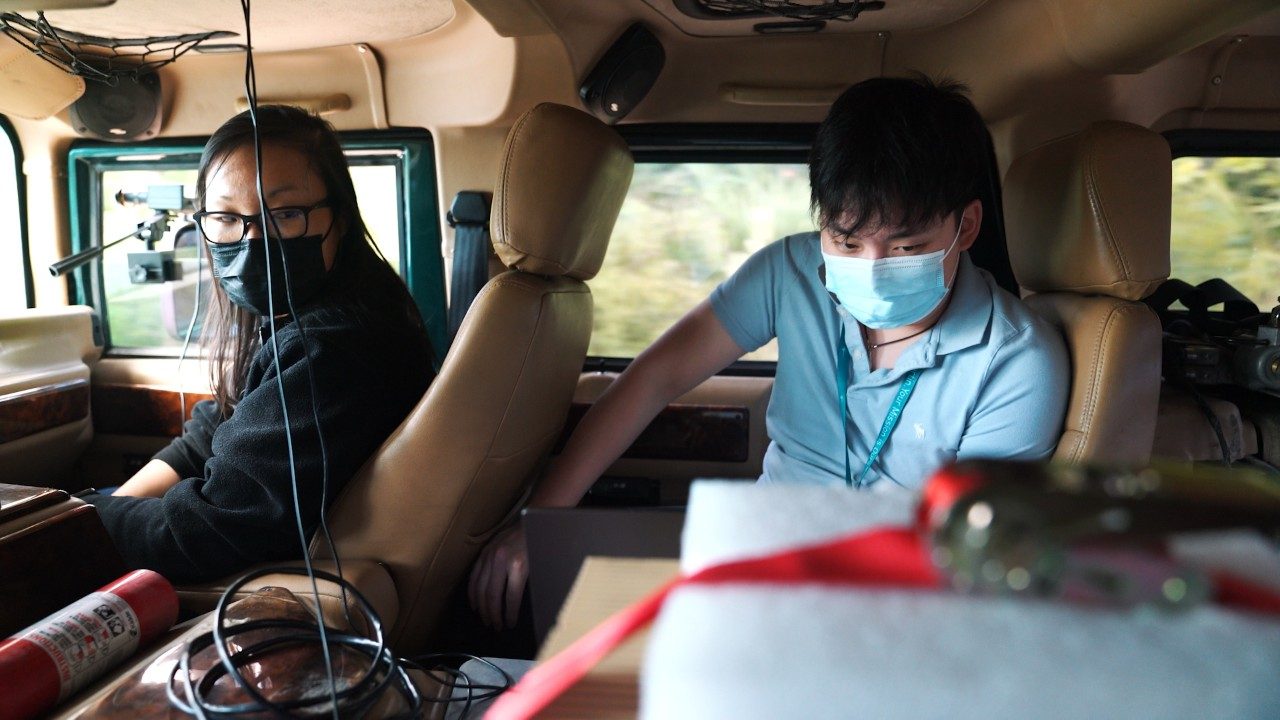Under the watchful eye of an alligator, a Hummer participates in an exercise to help Lockheed Martin engineers learn more about what 5G can do for warfighters in ground vehicle applications.
As conflicts grow more complex and potential adversaries evolve new strategies and capabilities, technology domains like 5G will play a key role in helping the United States and its allies maintain a decisive edge. Lockheed Martin launched its 5G.MIL® initiative to enhance this multi-billion-dollar commercial capability so its military customers can share information swiftly and securely across battlespaces—and make well-informed decisions faster.
“The commercial communications industry has invested billions of dollars into developing 5G technology,” said Steve Naboicheck, a Lockheed Martin Senior Fellow and 5G.MIL Rapid Prototyping and Experimentation Lead. “Lockheed Martin is leveraging and adapting this commercial technology to connect all services across all domains and enable robust command and control and enhanced situational awareness for the warfighters at the tip of the spear.”
A team of Lockheed Martin engineers based in Orlando, Florida is looking at ways commercial 5G networks might work in ground combat environments, installed, say, in armored or utility vehicles. In 2021 they installed 5G-enabled industrial-grade cellular modems in rugged open-architecture processor boxes developed for use in helicopters and ground vehicles. At the end of the year they put these processors in a pair of Hummers and went for a spin in a nearby stretch of scrubland—to learn how 5G networks behave in the wild.
Moving in pairs and individually, the Hummers exchanged high-bandwidth video over a 5G network while engineers rode shotgun to assess system performance. The team achieved edge-to-cloud latency in the 10 to 15 millisecond range (one-way), which is much lower than users traditionally see going over a cellular connection.
As online gamers know, network lag can be deadly. Achieving low latency is an important first step in developing 5G solutions that may someday enable warfighters to detect and respond to threats faster.
This exercise will help Lockheed Martin engineers develop operational tests to explore potential 5G.MIL applications for ground vehicles in the joint all-domain battlespace. Such applications might enable adjacent vehicles to compare sensor data and locate hostile shooters via triangulation. It might also enhance interactions with unmanned systems by, for example, allowing warfighters to task a drone to fly to a designation point and stream tactical sensor data back to them via 5G in real time.

During the exercise engineers passed high-bandwidth video over a 5G network to collect data on network performance while the vehicles were on the move.
This demonstration is the latest in a series Lockheed Martin is conducting to test out improved capabilities 5G can provide for the warfighter. In the summer of 2021, a team of Lockheed Martin engineers based in Colorado partnered with the U.S. Army to show how 5G connectivity could easily be integrated into a convoy of autonomous trucks allowing for continuous, flexible and resilient communication to be maintained through an airborne 5G.MIL Hivestar drone network. Similar demos with drones simulating satellites have shown the greater potential value that 5G could provide in contested and remote environments.




